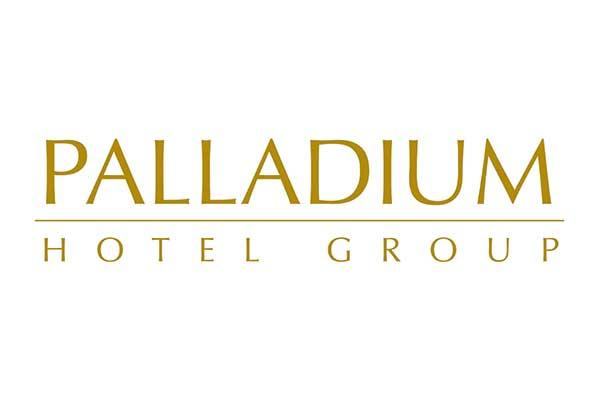European tourism Gardens of Eden no 8

Wine in Croatia, more wine in Bulgaria, giant brewery in Belgium, scenting wild roses in Cyprus – the best of European community tourism
ÄurÄ‘evac, The Rooster Town (Croatia)
Between the river Drava and the wooded region of Bilogora are the orchards, meadows and vineyards which make up the county of Koprivnica-Križevci, at the heart of which lies Durdevac.
The wine roads of the Durdevac countryside pass through the most picturesque of the vineyards, situated on the slopes of gently meandering valleys. Driving along, the visitor passes traditional architecture preserved in the old vineyard huts. These hold numerous old items of ethnographic heritage and the wine sampling rooms on family homesteads are open to visitors.
The region is famous for its various types of cakes, or diganke, zlevanke, mazanic, pogacice and prkaci, home-baked corn bread and dishes prepared according to old, almost forgotten recipes. Chicken is a particularly favoured element in local, savoury food.
The Picokijada festival, picok meaning rooster, at which events of an ancient battle are replayed alongside concerts, sports events and art displays. The legend of the rooster has put its stamp not only on the town of Durdevac but on the people’s identity as well – the festival has been staged for the last forty years and has been declared a cultural asset of Croatia.

Belogradchik (Bulgaria)
Myths, legends, even traces of ancient Thrace are waiting to be discovered by visitors to Belogradchik, (or small white town), situated in the foothills of the Balkan mountains in north west Bulgaria. The territory of the municipality of Belogradchik was placed under the Trybals tribe and its rich history gives the region its many myths and traditions and even, nowadays significant days in the ancient Thracian calendar are celebrated as festivals.
The place has an abundance of intriguing and natural features due to its geology to which it owes a network of interesting rock formations including what is described as the jewel in the crown, the Magura cave. Situated near Rabisha village, 25 km away from Belogradchik, this is Bulgaria’s biggest cave and home to galleries and halls that will appeal to the most experienced speleologist or caver.
An important highlight of the year is the folklore festival “From Tymok to Iskar – along the steps of the Thracians” which lasts for three days in September. The festival kicks off with the Thracian procession which takes place at the famous Belogradchik fortress to the sound of shepherd’s pipes and other musical instruments, as participants dressed in traditional Thracian clothing walk through the town. The scene takes on an eerie quality with participants dressed in costume, wearing masks and bearing torches. People wishing to join in can do so as masks, costumes and torches are handed out freely.
Thracian goddess Bendyda is feted as her story is celebrated in rock, fire and torch light and historical reenactments staged in Panairishte square, with titles like “Orpheus and the stone wedding” or “Tamirius and the muses”.
The region is celebrated for its wine and local inhabitants involve wine tasting as an important part of their traditions. The Thracians believed that wine could lift people out of the earth and up to heaven and local residents and tourists to the areas are willing to put the theory to the test.

La Ville D’Ath (Belgium)
Ath is a small and welcoming city located at the heart of Europe. It lies surrounded by two nature reserves, the “Hills” and the “Slopes” of the Escaut. In the last 20 years the town has undergone a significant revival through the revitalisation of the city centre and a campaign emphasising what it has to offer. The slogan “The land of Ath – it’s grand!”, and its logo, has come to symbolise the city of Ath’s expansion.
The people of Ath bring the Ducasse to life – and what is the Ducasse of Ath? A masterpiece of humankind’s oral and intangible heritage, according to UNESCO. The Ducasse is a procession of giants, a parade of characters that have been gathering for over five hundred years and draw watchers into a charming medieval festival. Although the event only lasts a few days, its effect is felt in the months leading up to it – it is the key to the city’s identity. Folklore inspired from the giants and related traditions appeared as a solid starting point for an urban revival campaign to boost the city’s image.
One of the ways visitors can immerse themselves in the local way of life and discover its peculiarities is by paying a visit to the giant brewery (Brasserie des Géants), to the mills (Moulin de la Marquise in Moulbaix, Blanc moulin in Ostiches) and to certain thematic paths dedicated to stone cutting and castles.

Steirisches Vulkanland (Austria)
Steirisches Vulkanland is a holistic destination where nature, space and man are harmonious. Nature, landscape, authentic cuisine, immaterial and cultural heritage can be experienced with all the senses.
The region lives in an equilibrium of material and immaterial values. Special accommodation allows visitors to experience “living culture” – dialect, legends and myths, customs and traditions – as part of the region’s distinctive culture of celebration throughout the four seasons.
In spring geomantic hikes along the “On Volcano’s Trail” hiking paths, allow visitors to experience nature’s awakening and the harmony of man and nature.
In summer glass manufactories open their doors to the public, handicraft traditions and culture can be experienced at close hand.
In autumn a cornucopia of delights as varied and colourful as the landscape makes a treat for all the senses. Wine-tasting in cellars with explanations by experts, wine harvesting in the vineyards, the interplay of the aroma of wines, juices, cheeses, ham, vegetables, and fruit.
And in the winter, rest and contemplation, experiencing calm in a landscape of tranquillity.
The 300 km hiking trail through the picturesque landscape is an invitation to visitors to immerse themselves in the landscape of Steirisches Vulkanland and get to know its environment and the people. The main route has 40-day circuit hiking routes which are accessible by public transportation.
Some 34 public and private gardens with various themes form a network open to visitors. The glass manufactory and the edible landscape – herbs, wild and cultivated berries and old varieties of vegetables – additionally mark the route.
Special festivals combine the three focus areas – cuisine, handicrafts and life force – on a high level. Masters in the various fields join together in a holistic pursuit of identity, authenticity and regional character.
SEE ALSO:
No 7 http://www.travelmole.com/stories/1148189.php
No 6 http://www.travelmole.com/stories/1147978.php
No 5 http://www.travelmole.com/stories/1147875.php
No 4 http://www.travelmole.com/stories/1147779.php
No 3 http://www.travelmole.com/stories/1147673.php
No 2http://www.travelmole.com/stories/1147583.php
No 1 http://www.travelmole.com/stories/1147467.php
Valere Tjolle
Valere is editor of the Sustainable Tourism Report Suite 2011, special offers HERE
 United Kingdom
United Kingdom United States
United States Asia Pacific
Asia Pacific












































Dozens fall ill in P&O Cruises ship outbreak
Turkish Airlines flight in emergency landing after pilot dies
Boy falls to death on cruise ship
Unexpected wave rocks cruise ship
Woman dies after going overboard in English Channel